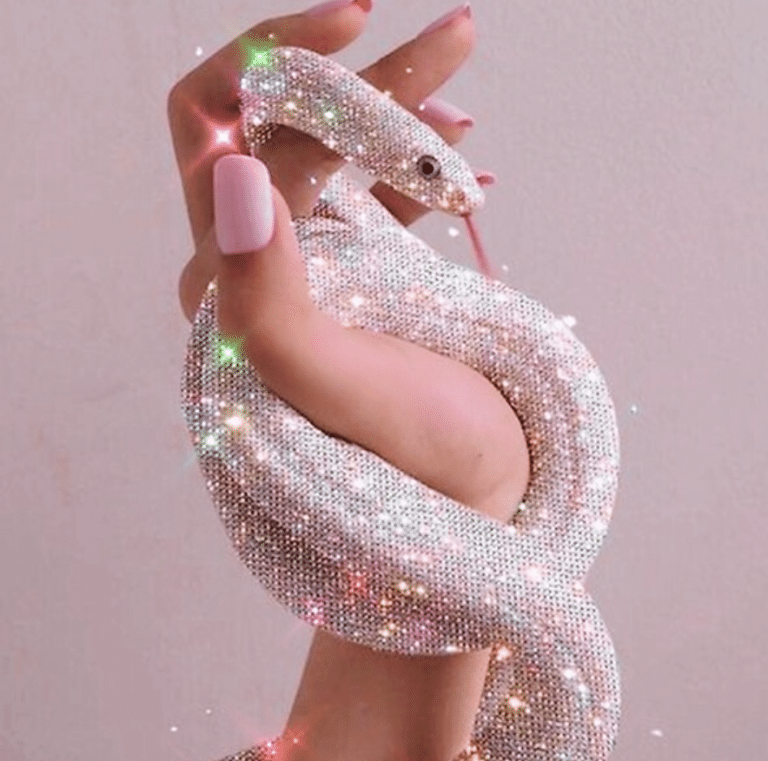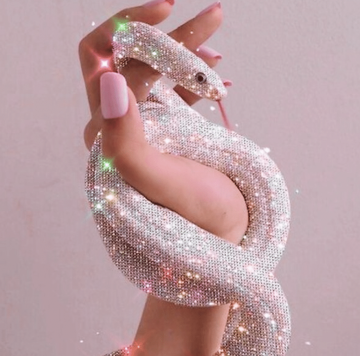
Hi Barbie!
In 2013 I wrote a post on Feminist Mormon Housewives called “The Mormon Priestess,” which made a splash at the time.
It started as a thought exercise in which I tried to understand the word “priestess” – a term very much present in the temple ceremony and very much absent from church, general conference, and modern theology. If there was a Mormon Priestess as recognized in the temple, then what did that mean? The Mormon Priestess essay explored the temple liturgy as a closed system with internal logic that was consistent with itself (and not necessarily with the modern church), and tried to pry meaning out of the words, symbols, movements, covenants, etc. of the temple. The result was startling, and as I came to understand who the Mormon Priestess was, who she was not, and what she could be, I gave myself permission to step away from the temple story and forward into the rest of my life.
Temple changes came in January 2019, and at a regional Sunstone Symposium in Orange County, CA, I argued that the changes did NOT “fix” the issues argued in the Mormon Priestess essay. The modern Mormon Priestess remains the same, but that fact is just hidden a little better now.
I’ve disengaged from discussing the Mormon Priestess since then. But now? Barbie. Why would that coax me out of oblivion? I spent the movie in a state of poignant and transcendent laugh/cry. Everything landed hard and also set me a little bit free. I experienced it as a delightful mashup of The Good Place, The Lego Movie, Dolly Parton’s Dumb Blonde, Hey Girl memes from the years of my feminist awakening, The Matrix, Calvin and Hobbes, and as others have noted, the Garden of Eden. And unlike anything before, the movie fiddled with a missing piece from “The Mormon Priestess.”
Oh, Barbie movie, what have you done? We can’t help being charmed by the beginning and the blinding aesthetic. Most reviews focus on “the monologue.” Recent analysis argues for an Eve narrative. And usually the ending of the movie, if discussed at all, is gently panned as its weakest part. But as for me and my creation myth, the ending is the best part.
One question I expected to get a lot when I released “The Mormon Priestess,” but never did, was, what COULD the temple look like for women? What is the story of eternal female destiny? If Eve was not punished for her excellent choice, if the atonement worked as fully on her as on Adam, if she was not subsumed in her husband’s priesthood but came fully into her priestesshood, what would a priestesshood be? How would we choose to re-imagine the temple? Mormon Priestess Barbie has the answer? Maybe not fully, but this movie offered a rare first glimpse of the possible. I knew that the upgrades needed for a woman-friendly temple would have to come from a woman, and maybe Greta Gerwig is the prophetess we need right now. Let’s walk through it.
Barbieland is the spirit creation. That which is plastic is eternal, right? Plastic does not degrade, cannot change, and is not alive. Consistent with her plastic nature, Barbie’s quest initiates as an attempt to resist change. “Plastic,” as I recall, is not even a word used in the movie, but the audience, well versed in play and the world of plastic toys, has an intuition about plastic. In a beautiful irony, though, the eternal nature of “plastic” as unchanging is both true and not true . . . look it up, and you’ll find that the definition of plastic is:
“The adaptability of an organism to changes in its environment or differences between its various habitats.”
“Unchanging” but with the ability to adapt and therefore change. Eternal but with progression?
Enter Gloria (America Ferrera), the mother figure in the movie. She is of Latin American origin, and is the catalyst that penetrates Barbieland in what I perceive as being in the tradition of magic realism, which is very strong in Latin American literature. In an inverse parallel, it is Gloria’s Unmagic Realism, her inclination to build Reality into the dolls (Depression Barbie, Cellulite Barbie, Irrepressible Thoughts of Death, etc.) that challenges the eternal-plastic Magic of Barbieland and starts eternal-plastic Stereotypical Barbie breaking her moulded mold, as it were (flaaat feeet!).
To resist change and stay the same forever, Barbie and Ken journey to the real world. This I interpret as the Fall. Based on the way space and time work in this sequence, I’d argue it is a vision, a revelation, a bridge of consciousness between worlds, a veil of the temple, where the spiritual and physical can interact. It is the bite at the fruit of the Tree of Knowledge of Good and Evil, when the realization comes upon them that both good and evil exist. In their travels, Ken and Barbie witness both, and in a delightful twist I never considered, this Adam and Eve often can’t tell good apart from evil and need to learn the difference through time and experience. From patriarchy and sexism to the hard truths of meta-Barbie-dolls’ good and bad impacts on girls and women, they discover that existence is complicated, dangerous, and that even though Barbies and Kens depict the fantasy ideals of the world that created them, Barbies and Kens are not actually welcome in that world.
On Barbie and Ken’s return to Barbieland, the Barbies and Kens get to decide what they will believe about the nature of reality. Different voices come to the Spirit-World-Barbieland to prophetically witness “reality” to the Barbies by those who have seen the vision of that other existence, and our War in Heaven (or perhaps the Temptation) ensues.
Our prophet/witness Ken preaches patriarchy, and in a beautiful fashion, he ultimately exposes patriarchy’s inherent violence and becomes a victim of it himself. He later tries to revert to innocence and Barbie will prod him on his own journey to, hopefully, someday, know better and do better. His story is left without an end, as is apropos, since patriarchy still needs to deal with itself. These worlds are mirrors after all.
Our prophetesses Gloria (the Mother) and Sasha (the Daughter), who each represent opposite ends of the spectrum of the Barbie scale, preach the gospel of Lived-Female-Experience. Their words are born from their unmagic reality, which was the catalyst that infused all this change in Stereotypical Barbie in the first place. They present the paradox of Existing While Female. The hows and whys of people loving and hating Barbie dolls distill complexities of hows and whys of women operating in unrelenting paradox in the real world. Gloria and Sasha testify and speak truth, this is scripture, it is simple, it is powerful, and when spoken every woman in the audience can feel the truth of it in mind and body.
The monologue, and the wonderful extensions of it spoken by Gloria as they kidnap and deprogram each Barbie, as well as Gloria’s “honest barbies,” and Sasha’s speak truth to power zero room for BS attitude, demythologize patriarchy and its fetishization of “womanhood,” setting the Barbies free. The sequence centers female power as the restoration of Agency, the most precious of all gifts, and powerfully represents WHY we all need to progress past innocence and not just stay in the Garden forever. The Garden is no ideal haven. The Garden, it turns out, is dangerous too, especially for Innocent Barbies and Kens.
There is no deprogramming monologue for the Kens, and they succumb to patriarchy as surely as the Barbies did. The Barbies hatch their plan to take over Barbieland Eden, not with fists, but by leveraging the Inherent nature of patriarchy. In patriarchy, the drive to dominate, own, and control is key. The Barbies resist domination and control by performing interest in other Kens, and the Kens turn from trying to dominate/control the Barbies to now dominating/controlling the “other” Kens (so they can dominate/control “their” Barbies). A dangerous recipe for resistance perhaps, but also an instructive one.
The Battle of the Beach plays out and patriarchy destroys itself while Matriarchy votes in democracy and destroys the Ken-dom. The Spirit World is restored and makes a bit more room for the Kens. The film acknowledges that matriarchy has its harms (it practically dares the Kens to complain of their treatment, inviting the conversation if anyone is brave enough to have it) . . . and also the movie seems unapologetic in suggesting that matriarchy is still better than patriarchy. It also delightfully promises that the Kens will progress in power in parallel to women’s progression in power in the real world, suggesting that as patriarchy decreases, the Kens will rise. Those with ears to hear, hear.
But that’s not the ending. Barbie and Ken getting together is not the ending. Ken finding himself is not the ending. Even Barbie finding herself is not the ending.
The ending is . . . the beginning.
And here is why I love the ending. The new narrative of creation. A vision of what a temple story could be for priestesses.
Barbie gets to meet God. And have a word.
In good scripture parallelism fashion, Barbie does this three times.
First, she meets Mattel, or dare I say, the False God, kind of like Jesus being tempted by Satan when coming into his ministry. The all-male board, the polished surfaces, the pink-washed speeches, the pedestal-ism of women and girls (“in the most non-creepy way possible”), the naming of female agency as glitter (pretty but insubstantial), the lies and hijinks to put Barbie back in the box, the stale and sterile heaven of it all screamed Corporation and it was too perfect and echoed loudly through the universe. Does an institution minister or ad-minister? Does it count souls or dollars? Does it extort or exalt? Barbie thought Mattel created her, that they knew her and her needs, that it had her best interest at heart, that it would protect her (in her box), and so did Mattel. My stomach clenched as Barbie lowered her hands into the ties. I know in my memory what it is like to do that. I also know in my memory from opening Barbie dolls what it feels like to undo those ties – they are fiddly and sharp but yield to the muscles of my little-girl fingers. Barbie’s hard-earned progression from innocence to insight sets off the red flags, and her new agency kicks in. Barbie sees through the falsehood. Barbie runs away. Go Barbie go!
Barbie, emerging from this Outer Darkness, finds the true Creator, Ruth Handler (is there any more perfect name?). The Creator is not polished or perfect; she is a business woman but with problems, old, “with a double mastectomy and tax issues.” Like Gloria, the mother figure, Ruth is “. . . weird and dark and all the things you pretend not to be.” She is not the doll that she created and doesn’t pretend to be. She is complicated, relatable, imperfect, real. Mother. We trust her. And we feel Barbie’s pain as she struggles through the most subversive tea party ever filmed. A human playing with her doll, her doll trying to play human.
Later, the third divine encounter. In an empty place, an in-the-beginning, a crossroads, a temple, Barbie calls the Creator there, and Creator comes. Barbie asks Creator to help her understand herself. This is Barbie’s vision quest, her self-actualization, her revelation on the nature of her reality.
The origin story.
Creator made Barbie, for her daughter, Barbara. Creator names Barbie a creation, and with the name Barbie, a kind of daughter by proxy, a co-creation with her human daughter. Creator also identifies Barbie as an idea (eternal, plastic), something that lives forever. Barbie uses that pesky agency again. She doesn’t accept this as her reality any longer . . . she was handled by Ruth, by Gloria, by Mattel, by her role as stereotypical Barbie, and by Ken – all made her a plaything, all ultimately involved harm, and she has outgrown being handled. Barbie wants to be her own The Handler.
Creator capital-H Hears Barbie and enforces her agency. Even Creator didn’t know what Barbie would become – imagine a temple ceremony where you are able to surprise God! Creator shows Barbie a vision of what it is to be human, her next step, so that Barbie is making a real choice and NOT simply falling into mortality via ignorance. She chooses her humanity in full awareness.
There is no serpent, no savior, no husband, no sexual innuendos, no gender roles, no priest between Barbie and Ruth. No punishments, perfection, promises, or polygamy. There is only courage, choice, consequence. For a moment Barbie asks permission . . . as we so often do . . . but in the end, it is not needed. Agency, girl.
Time to Get Real, Barbie. Queue the second creation, the physical creation.
Agency, and now life. The Handler formed her once, but now . . . . That heaving bosom! Not as sexual, but perhaps as physical sex, “a girl,” a new woman, of her own volition, taking her first free breath. I will never unsee it. Female creation is not confined to motherhood – Barbie is not birthed (and Barbie is no baby doll!), she was made, then co-made, then self-made, and she chooses to draw breath on her own terms. That bosom suggests she “has all the parts” as will later be confirmed, and though she has already created herself, she also has the capacity for motherhood. She is plastic to plasticity. She is the doll choosing to be the girl. From idea/role/trope/fantasy/stereotype to flat feet, cellulite, blood, bones, and a vagina . . . as well as irrepressible thoughts of death, depression, danger, and paradox. Maybe Get Real Barbie won’t be welcome in this world, or even happy, but she knows from experience that idea/role/trope/fantasy Barbie isn’t welcome there either.
Barbie is wise now. She knows that being an idea, a doll imagined by others, is not enough to do the things that Barbie was “made” to do – to “make” the world better for women and girls. She has faced and overcome patriarchy before, and the real world, steeped in its darkness, needs her most of all. She chooses to fulfill this measure of her creation and “love women” and understand them more than a toy or a toy company ever could, by going to live among them as a woman herself, and do what she can do.
Hopefully Barbie will confront her literal life with safety, unconditional love, art, and the ability to heal from the wounds that await her. Her ending is also not resolved, as she will write it herself.
P – Pockets!
I – pInk!
N – paNts!
K – Agency!!!
And on the seventh day Barbie named herself Barbara Handler, declared herself Real, and saw that she was good-enough. And God looked upon her creation, and saw that she was just-right.
Elizabeth Hammond lives in California and works as an Academic Coach, helping students apply executive functions to school. She gleefully spends her Sundays living her Barbie Dream Life: reading, gardening, beekeeping, hiking the redwoods with dogs, sailing, winemaking, drumming on the beach, thinking about the kids away at college, working on her stupid car, and hanging out with her epically imperfect Ken.






10 Responses
For years I have yearned for a scene showing Eve with the Creator getting her own pep talk and acknowledging who she came from in the temple ceremony. My last trip to the temple I was blind sided by the thought, “I’m in the wrong workshop”. Que the ending/beginning from the Barbie movie. I sobbed as I saw what I have desperately aches for beautifully played out for the first time. I also could not get over how “weird Barbie” so perfectly demonstrated what trauma can do. She specifically states she was “played with too much”. This is not the Velveteen Rabbit. There is a significant difference between “played with” and “loved too much”. But weird Barbie shows what happens when we take the trauma/pain/and hurts gathered in this life and use it to gain empathy, awareness and compassion. And then she saves the world. I couldn’t get enough of it. Love that we can all realize that “woman” or “mother of all living” is an idea, and move onto what we were made for- living. Not perfectly, or in some prescribed way, but wholly. Next time I want to be reminded of how my creator sees me I’ll watch Barbie rather than sit in a cold room hearing only
Men speak about men’s purposes.
Thank you for this. Is there a place to see your 2019 Sunstone presentation?
Unfortunately I’ve never seen it posted, though I know it was filmed – the program is here:
https://sunstone.org/orange2019/
“Female creation is not confined to motherhood – Barbie is not birthed (and Barbie is no baby doll!), she was made, then co-made, then self-made, and she chooses to draw breath on her own terms.”
This gave me chills when I read it. I love your reading of Barbie as a story of eternal female destiny. If only LDS liturgies and discourse could take a page from this movie and your explication of it…. I’m so tired of the boxes we women are shoved into.
This is brilliant! It gave me so much to think about.
That final scene where she talks with her female creator was so moving. This has helped me explore why.
The first time she meets Ruth, I was confused why Barbie had to walk through that cavernous room to get to the little kitchen. I think now that it’s showing how Ruth isn’t taking up all the space that is hers. It’s the difference between being limited to Heavenly Mother and the massively more expansive Feminine Divine.
Love your thoughts on plastic the material vs. plastic = being changeable.
Elizabeth, this is so beautiful and insightful! Thank you so much for sharing it with us.
Elizabeth, you are a legend! You changed everything about how I viewed the temple and I am so glad to see you writing more. Please come write guests posts about everything! ♥️♥️♥️
So many amazing insights here, thank you. I didn’t like that the movie said yeah maybe someday Ken (like why not build a world that is more equitable now), and I appreciated your take in the way it mirrors the real world, and the truth that as patriarchy diminishes. Your brilliant words: “ also the movie seems unapologetic in suggesting that matriarchy is still better than patriarchy. It also delightfully promises that the Kens will progress in power in parallel to women’s progression in power in the real world, suggesting that as patriarchy decreases, the Kens will rise. Those with ears to hear, hear.”
That line jarred me at first too. And I could be wrong in my interpretation, but I got the sense that it was more of a “as you all collectively get brought up to speed, more opportunities will be available to you” and less of a patronizing move. We don’t know if the Barbie in question will set up a Ken mentorship program or what – and it is plausible that the Barbie doesn’t even know. The scene is really short after essentially 2 government leadership reversals – the plausibility of the “unknowns” and “undefined” vs “that’s all that there is” is high.